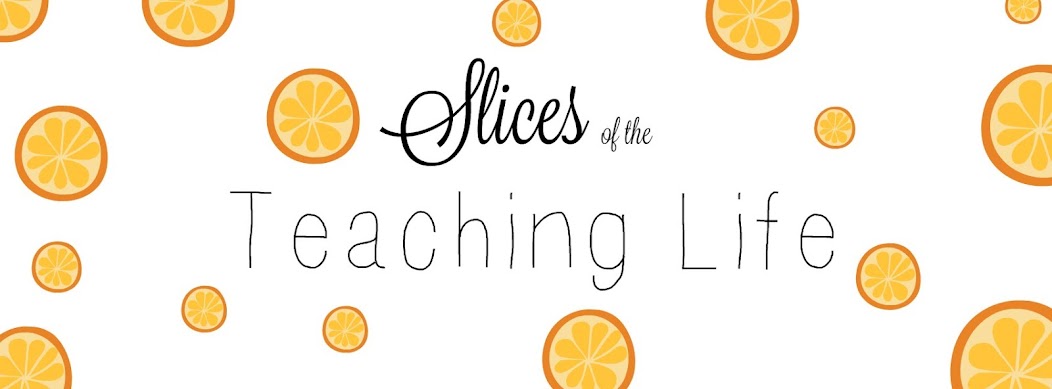I don't know about you, but vocabulary is one of the most difficult lessons to make "fun". Sure, my students have done Marzanno's drawings and the perfunctory exercises, but I always struggle finding ways to make vocabulary lessons enjoyable for both my students and myself. One of the best strategies that I've used in my classroom with my 7th grade students is to do hand motions with the words.
Credit for this activity goes to my high school Spanish teacher, Mrs. Smoker, who always required gestures when learning new words. Kudos to you, Sra. Smoker. The Spanish may not have stuck, but I DID get something out of those classes.
After introducing, pronouncing, and defining vocabulary words, we create gestures that go with each word's meaning. I must be honest, some students who are "too cool for school" roll their eyes, but eventually, peer pressure takes over and they are emphatically waving their arms like the rest of the class.
Throughout the week, whenever there is a moment of free time, I will announce a word, and expect that my students will immediately do the motions (and, for the most part, they do). Not only does this break up the worksheets, it REALLY HELPS them learn their words. I even witness a student or two each week performing their gestures discretely under their desks as they take their weekly quiz.
Note:
We use Word Up Flocabulary in a very abbreviated form. My colleagues and I call this "Frankensteining" (which we know isn't a real word). The entire workbook is too daunting to complete for every unit, so a smaller portion with different exercises is used instead. We really like their word lists (words that they can actually use in their writing) and the students enjoy the raps. If you subscribe to their online version, they have videos as well. Fun!
Wednesday, February 18, 2015
Vocabulary Activity: Gesture Like You Mean It!
Monday, February 16, 2015
Writing Quality Constructed Response Questions
During the last post, I discussed my main strategy for teaching my students HOW to answer constructed response answers. Rigor is often a topic that is discussed at professional development meetings that I attend/facilitate. How can we create an accessible but rigorous curriculum? how can other content areas support what we are doing in Language Arts? How can content areas be assured that they are hitting the literacy standards for their area?
Creating quality constructed response questions can help emphasize analysis and using textual evidence in ANY content area and can help increase RIGOR. We're really talking about asking students reach at least level three in the Depth of Knowledge Levels.
First, I share with teachers three ways to create a quality constructed response question.
Then, I share the rubric that is used by our state. I always encourage teachers to use the rubric that is on the state assessment so that students are familiar with exactly what is expected. This also allows teachers to gauge where students are during their class work.
Creating quality constructed response questions can help emphasize analysis and using textual evidence in ANY content area and can help increase RIGOR. We're really talking about asking students reach at least level three in the Depth of Knowledge Levels.
First, I share with teachers three ways to create a quality constructed response question.
Then, I share the rubric that is used by our state. I always encourage teachers to use the rubric that is on the state assessment so that students are familiar with exactly what is expected. This also allows teachers to gauge where students are during their class work.
Friday, February 13, 2015
Constructed Response Ninjas
When I introduce constructed response questions to my students, I am met with the typical middle school response to anything that makes them think: a groan, slouching in their chairs, and eyes to the ceiling. The concept has, it seems, been drilled into their brains for many years, but they still can't seem to master the skill of answering such a question. A few years ago, my district brought in Smeckens to help us with Language Arts mini lessons and preparations for the state assessments. The strategies that they taught, along with the collective ideas from other amazing department members in my school, have helped me make my students Constructed Response Ninjas. Now when my students encounter the dreaded constructed response questions, they meet it with the confidence and stealth of a trained ninja.
Introductory Lesson:
This lesson is taught the first week of school (as constructed response is a part of EVERY unit throughout the year). We begin with a brief introduction of the question type and answer format called Yes Ma'am (acronym courtesy of Smeckens).
After the initial lesson, and A LOT of practice with the basic format, we take it a step further by completing a Yes Ma'am Challenge.
A few things to note:
1. Smeckens is amazing. Highly recommended and extremely valuable.
2. We use the acronym Yes Ma'am, but move away from calling those questions "Yes Ma'am Questions" and instead use the term Constructed Response. We value the acronym, but feel that it is important for our students to know the official term for this type of response.
3. My colleagues, who helped create these lessons, rock!
Yes Ma'am Challenge Lesson:
After the initial lesson, and A LOT of practice with the basic format, we take it a step further by completing a Yes Ma'am Challenge.
A few things to note:
1. Smeckens is amazing. Highly recommended and extremely valuable.
2. We use the acronym Yes Ma'am, but move away from calling those questions "Yes Ma'am Questions" and instead use the term Constructed Response. We value the acronym, but feel that it is important for our students to know the official term for this type of response.
3. My colleagues, who helped create these lessons, rock!
Subscribe to:
Posts (Atom)




